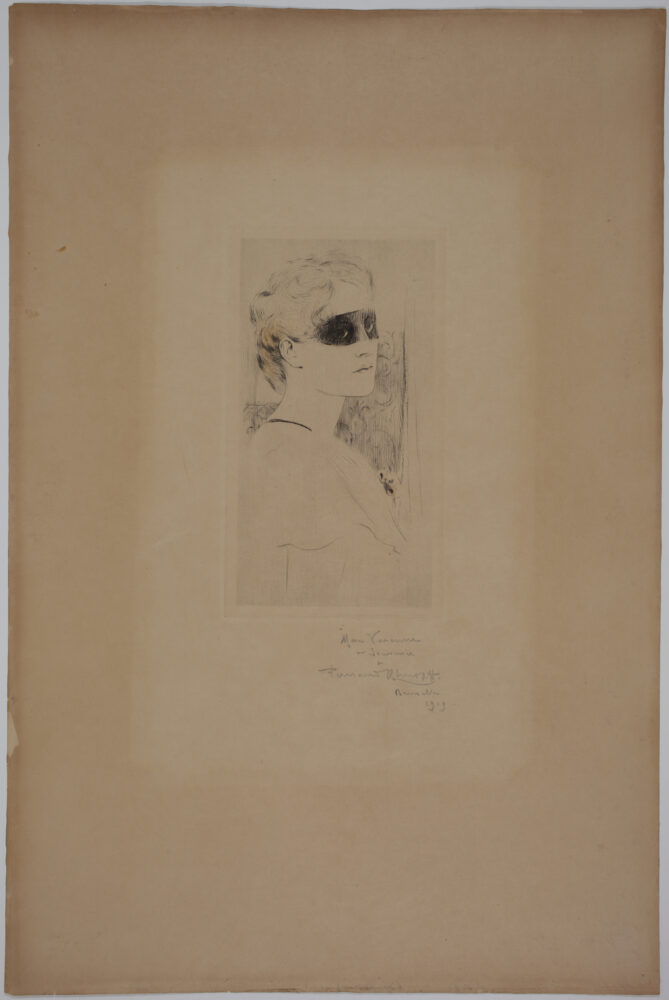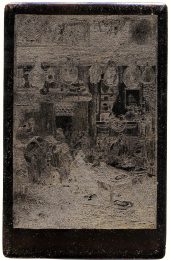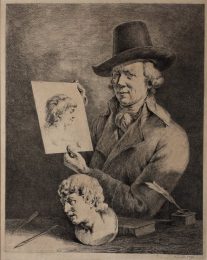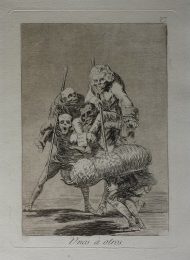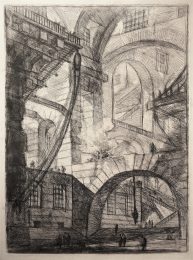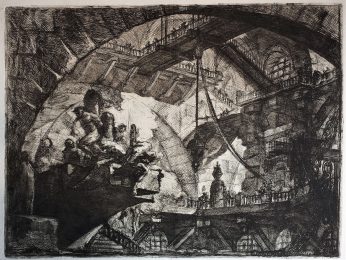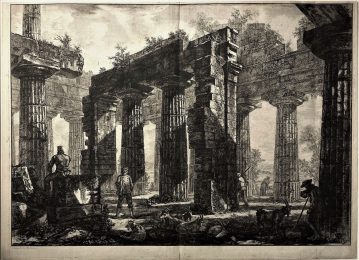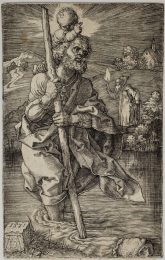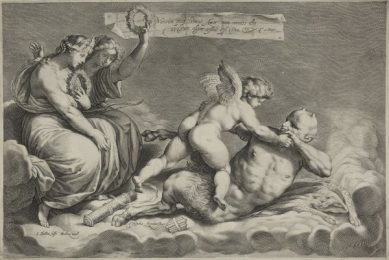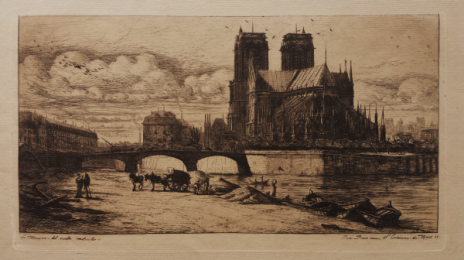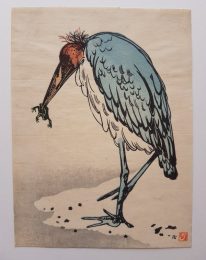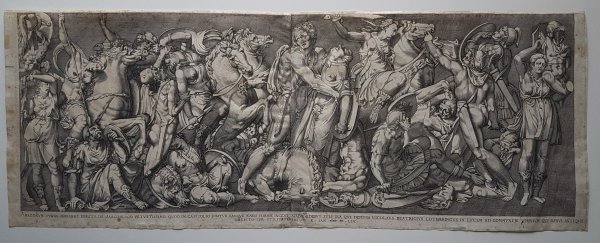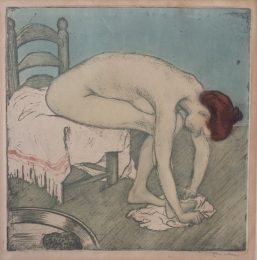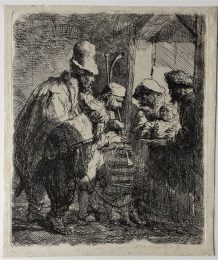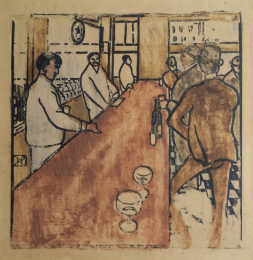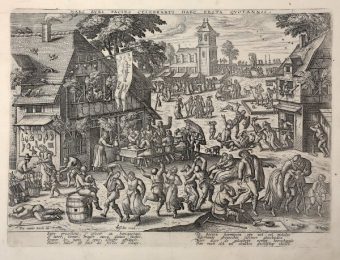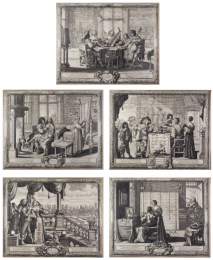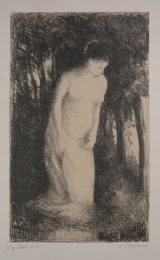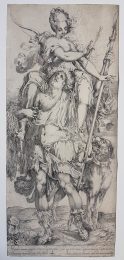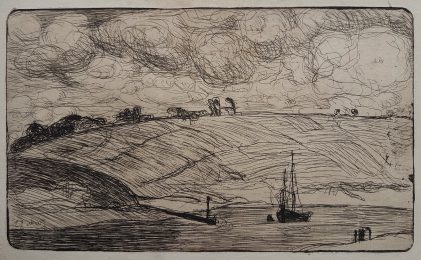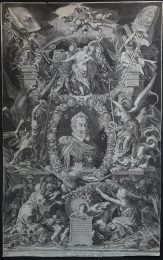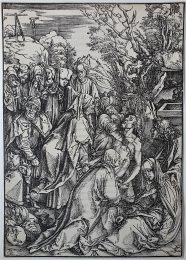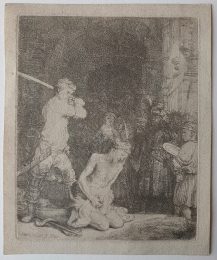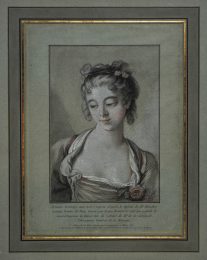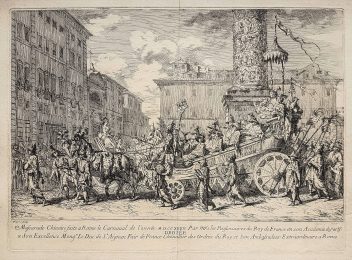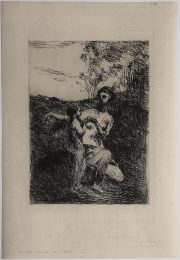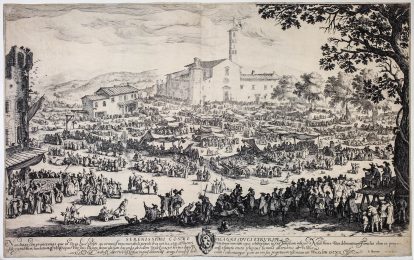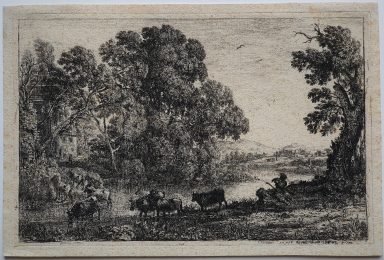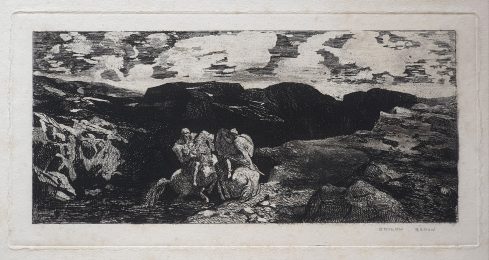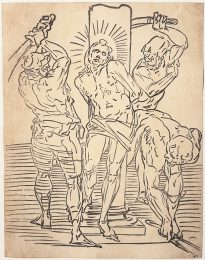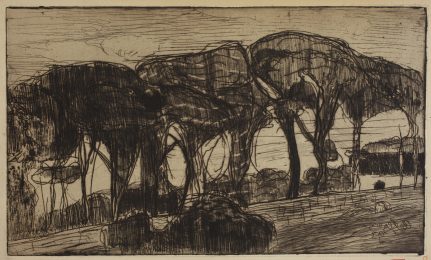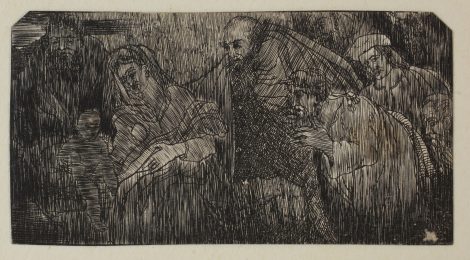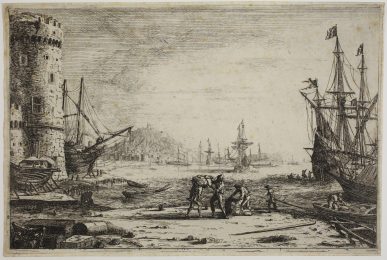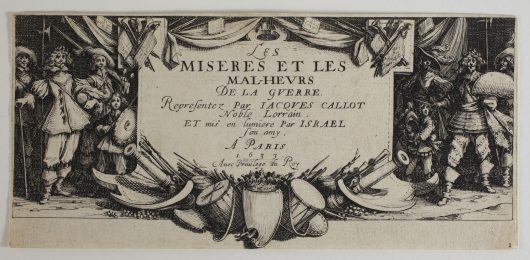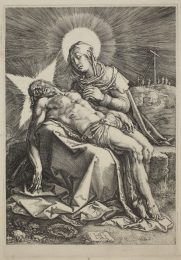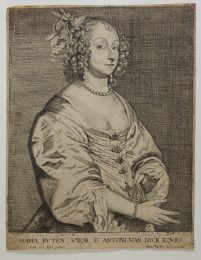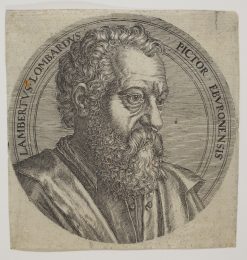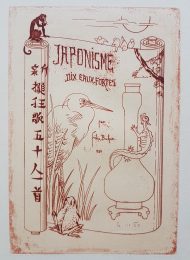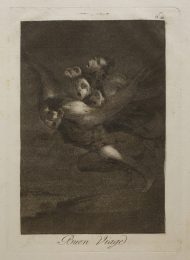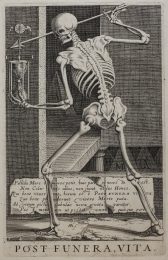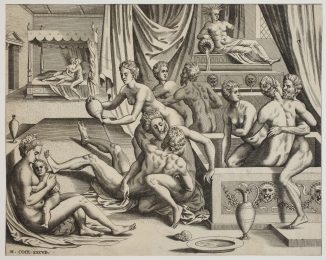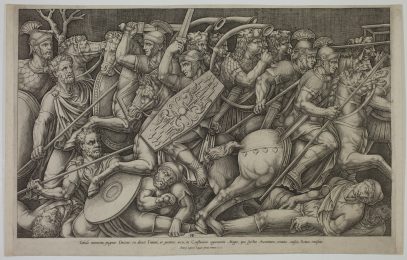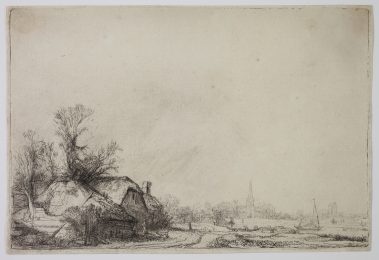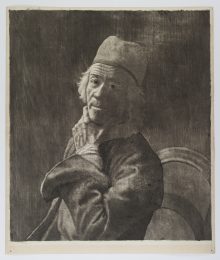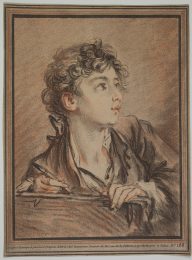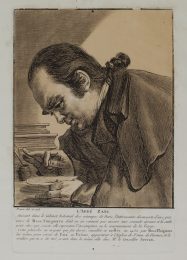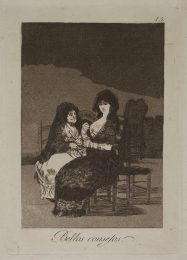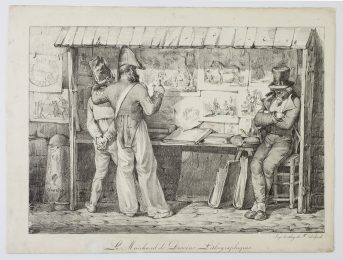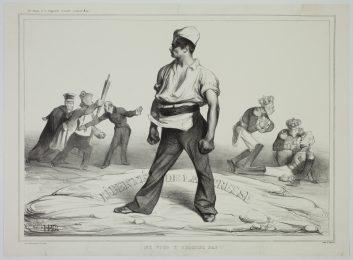Details — Click to read
Drypoint enhanced with coloured pencil, 180 x 100 mm. Delevoy, de Croës and Ollinger-Zinque 337, Tricot 6, 3rd state (of 3).
Impression of the final state with the small circles added to the right of the curtain.
Very fine impression printed on Japan paper, enhanced with orange pencil on the young woman’s hair and lips and on the flowers of the dress; signed, dated and dedicated in pencil by Fernand Khnopff: “à / Marie Varenne / un souvenir /de / Fernand Khnopff / Bruxelles / 1919.” [to Marie Varenne / a souvenir / of / Fernand Khnopff / Bruxelles / 1919”] Generally in very good condition. Two tiny scratches in the left margin and a slight trace of yellowing in the margins. Wide margins (sheet: 450 x 300 mm).
Xavier Tricot gives the following description of the edition of this drypoint: “Very limited for proofs in the first and the second state; about 100 proofs in the final state, printed in black on Holland paper, included in the portfolio of the Société des Aquafortistes belges published in 1901, as well as several proofs in black on Japan paper, of which some enhanced with coloured pencils. The edition size of La Revue de l’art ancien et moderne is unknown.” (Tricot, pp. 115-116).
Michel Draguet points out how important drawing was in Fernand Khnopff’s artistic practice; he notes that “in the crystalline hardness of his thought, drawing is naturally drawn to printmaking, and more specifically to drypoint”; Khnopff tries out this technique “in 1898, at the invitation of the Société des Aquafortistes”. (Michel Draguet 2018, p. 182, our translation).
In 1901, Khnopff explains to his peers his conception of printmaking as a “positive process”: “The copperplate is like the sheet of paper, the drypoint needle is like a pencil, and lines have the ordinary appearance of black on white » (quoted by Michel Draguet, 2018, p. 182, our translation).
Adding highlights in coloured pencils on some impressions is a process that Khnopff also used to enhance photographs.
Masks are a recurring theme in Fernand Khnopff’s œuvre, one that he explored in different media: drawing (Le Masque au rideau noir [Mask with a black curtain], 1892), sculpture (Masque de jeune femme anglaise [Young English woman with a mask], 1891, Un masque [A mask], 1897), photography (Un masque [A mask], photograph with highlights) and printmaking.
References: Michel Draguet: Khnopff ou L’ambigu poétique, 1995; Michel Draguet: Fernand Khnopff, 2018.

![Un masque [A Mask] by Fernand Khnopff](https://www.printed-editions.com/wp-content/uploads/2022/05/khnopff_masque-scaled.jpg)
